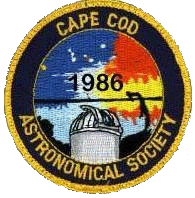Instructions
Things You'll Need:
- Amateur Radio License
- Radio transceiver
- (with 6-Meter band)
- Or radio transceiver
- (with 2-Meter or 10-Meter band)
- Or radio police scanner (all band)
- Or old analog television set (CH 1-6)
- Resonant antenna
- Notebook/logbook
- List of meteor showers
-
1
Get your Amateur Radio Operators License from the FCC (Federal Communications Commission). You do not to need to know Morse code any more; but it is still useful and interesting. Study for the test online. Memorize most of the answers. They give them to you in advance these days (if "A" is the multiple choice answer during study, "A" is also the answer on the test). Take the test. Get your license and you are on the air.
-
2
Set up your radio astronomy station. All you need is a radio transceiver with the 6-Meter (50 MHz) band and an antenna. Other frequency bands and radios will work also.
-
3
Use a shortwave radio, 6-Meter radio receiver or scanner to listen to meteor pings and to listen to stations in contact using meteor scatter propagation if you do not have your Ham Radio License yet. Use your old analog television receiver set to a vacant frequency between Channel 1 and Channel 6 to hear meteor pings and to see meteor signals as distortions in the background "snow" pattern on the TV screen.
-
4
Connect your radio transceiver, receiver, scanner or analog television to an appropriate matching antenna. (Beware of lightning and power lines.)
-
5
Mark your calendar for upcoming meteor showers and storms. Get the dates on line (search Meteor Showers). There is always a meteor shower going on somewhere and overlapping with the next one and the previous one. But, the big meteor events are best because the number of meteors per hour is greater and you increase your odds of hearing meteors.
-
6
Listen for meteors on a clear frequency between 50.260 MHz and 50.290 MHz. You will hear a distinct ping or crackle above the background static when meteors ionize in the atmosphere within your radio horizon. Channel 1 on analog televisions is a similar nearby frequency for meteor listening.
-
7
Listen on 50.260 MHz for radio stations calling "CQ" by voice or by Morse code. The strange signals you hear near 50.270 MHz are advanced digital communications modes. When you hear a signal to which you wish to respond and to which you are able to respond, quickly give your call sign into the microphone and hope for the best. If the other station hears you, he will respond with your call sign and a signal report and you will have made your first meteor scatter contact.
-
8
Give the other station his signal report quickly and the exchange is complete. There is no time for chitchat during meteor scatter contacts because of the sporadic presence and temporary nature of ionized meteor trails at any given moment. Most usable ionized meteor trails last from a few seconds to perhaps a minute or so under the very best of conditions.
-
9
Listen on nearby frequencies for other stations calling "CQ-Meteor" and bounce your call sign and radio signal off another meteor to make the next contact.
-
10
Record dates, times, call signs and signal information in your logbook in case you want to compile meteor data or exchange QSL cards later. Sometimes meteor propagation lasts longer than a few seconds and names and locations can also be exchanged. If not, look that information up on QRZ.com, the online directory of amateur radio operators worldwide.
-
11
Exchange QSL cards with the stations you contact in order to confirm your meteor scatter communications. Send QSL confirmations and signal-listening (SWL) reports to stations you listen to via meteor scatter while you wait for your Amateur Radio Operators License to arrive from the FCC.
